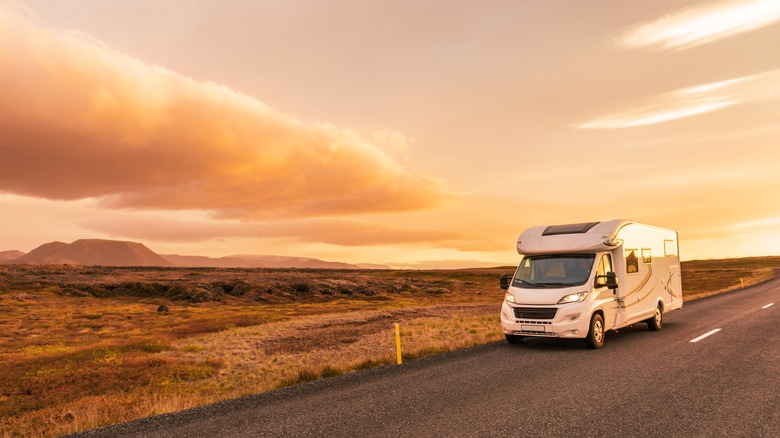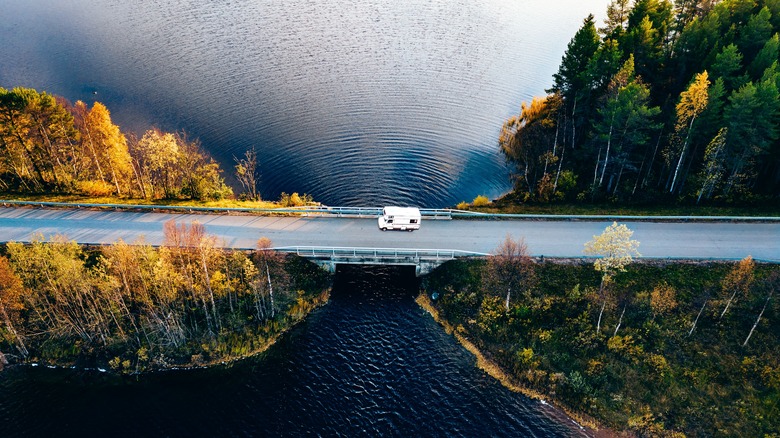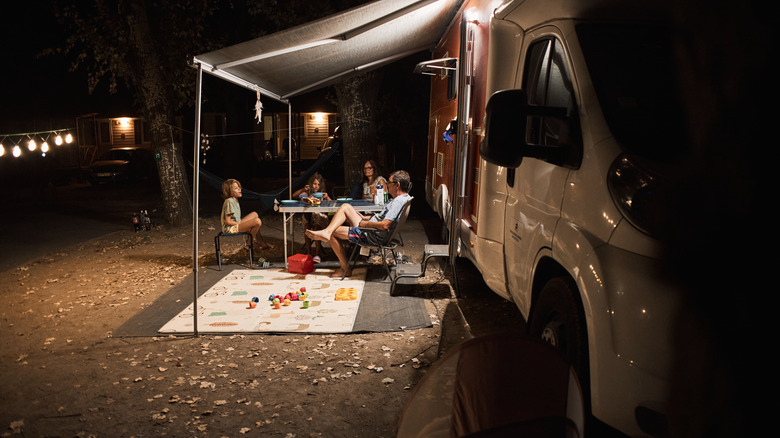The Genius 3-3-3 Rule Can Help Keep You Safe On Your RV Trip
Planning an RV camping road trip for the first time is exciting, but it can also be intimidating. There are a lot of logistics to consider. How long should you drive every day you're on the road? How long should you stay at each destination? Fortunately, there's the 3-3-3 rule to help you answer those questions.
While it's called the 3-3-3 rule, you'll see a few different 3s floating around as a part of these guidelines. In general, you should drive about 300 miles per day, stop every 3 hours, and stay at each campsite for three days. However, sometimes a fourth 3 is added to remind travelers to arrive at their campgrounds before 3 p.m.
Every road trip is different, so the 3-3-3 rule should be taken more as a suggestion than a strict, unchangeable law. Some drivers will feel comfortable spending more time on the road, and some campers will want to spend longer at their favorite camping destinations. Still, the 3-3-3 rule can give you a good framework for building your perfect U.S. road trip.
Set a reasonable pace
When planning a trip, it's easy to overbook yourself by adding a vast number of exciting places to visit and driving for long stretches between them with no breaks. Then, when you're on the road, you're either exhausted, rushing from location to location, or forced to abandon some of your itinerary. The 3-3-3 rule can help prevent this by setting a reasonable pace for your RV trip.
As previously stated, the first 3 in the 3-3-3 rule suggests driving no more than 300 miles in a single day. Depending on the speed limit and other road conditions, this will probably take you somewhere between four and six hours. The second 3 in the 3-3-3 rule might also make your trip take a little longer, but it's worth it. It states that drivers should stop and take a break after every three hours of driving. While it can be tempting to drive straight from campsite to campsite so that you don't waste valuable vacation time on the road instead of at your destination, it makes the trip much more grueling. Stopping every three hours to grab a snack, use the bathroom, and walk around can make the entire journey more relaxed and fun.
At the campground
The final 3 of the 3-3-3 rule suggests that travelers should spend at least three nights at each stop on their trip. While some prefer to schedule more short stays at different campsites to see as much as possible on their trip, there are real advantages to taking this advice and spending a few nights in one spot.
For one thing, setting up and breaking down a campsite takes time, especially when you have all the best camping gear. If you want to get the most out of the spot you chose, exploring, sightseeing, hiking during the day, and relaxing around the campground at night, you should try to devote a couple of days to it. It's also worth remembering that your first day at the campsite will have been a travel day, so the driver will probably be too exhausted to do much until they've had a full night's rest.
Some people also include another 3 in these guidelines: 3 p.m. Many RV campers believe you should never get to a campground later than 3 p.m. if you can avoid it. In addition to getting a few good hours of sunlight to set up your campsite, lots of RV parks aren't manned by staff in the evenings. This can make checking in much more difficult later in the day, especially if there's anything wrong with your spot. Want to further ensure your camping retreat is quick and easy? Check out the five items Islands recommends to streamline the experience.


